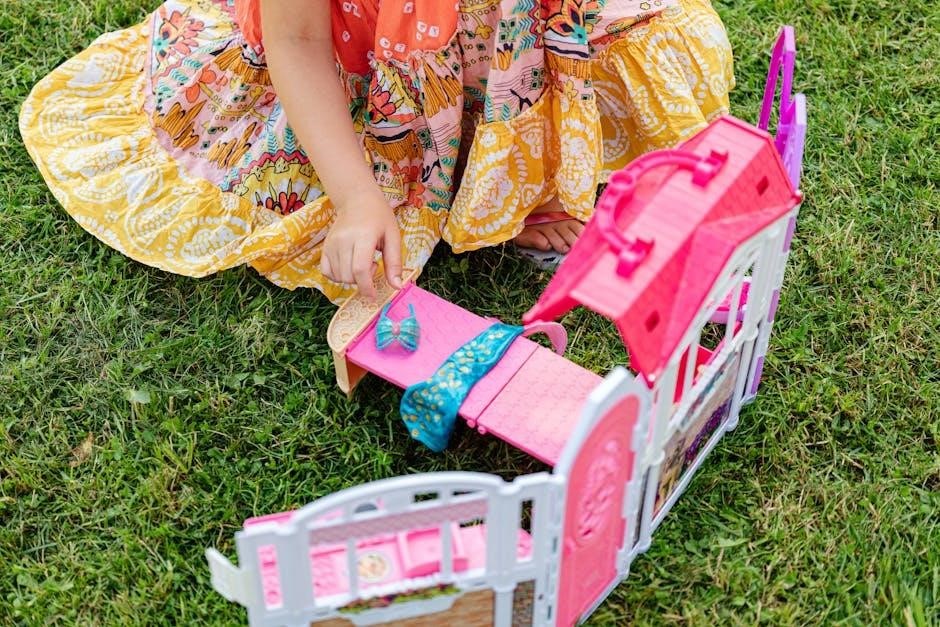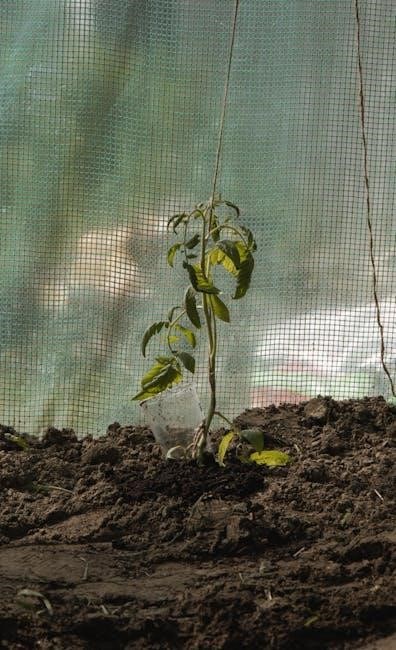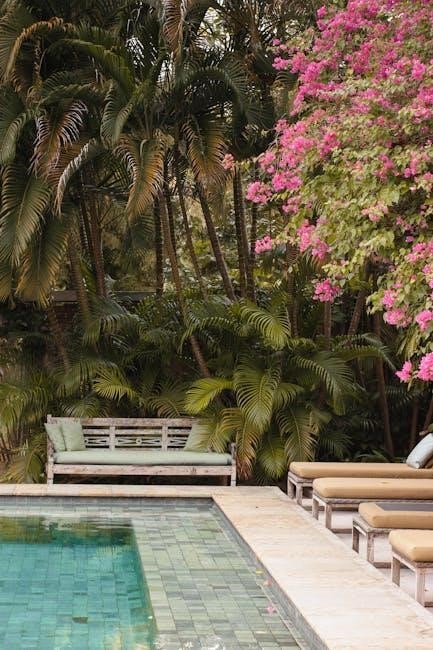
Keter raised garden beds offer a durable, easy-to-assemble, and versatile solution for gardeners of all skill levels. Known for their innovative design and excellent drainage systems, these beds provide optimal growing conditions for plants, ensuring healthy root development and efficient water retention. Perfect for small spaces or large gardens, Keter beds are a practical choice for cultivating vegetables, herbs, and flowers, making gardening accessible and enjoyable for everyone.
Overview of Keter Raised Garden Beds
Keter raised garden beds are lightweight, modular, and designed for easy assembly, making them ideal for gardeners of all experience levels. Constructed from durable UV-protected plastic, these beds are weather-resistant and long-lasting. Their sleek design and compatibility with various plants, including vegetables, herbs, and flowers, make them a versatile choice for diverse gardening projects. The beds also feature a water reservoir system, ensuring efficient watering and healthy root growth. Their portability and eco-friendly design allow for flexible placement and sustainable gardening practices, making them a popular choice for modern gardeners.

Benefits of Using Keter Raised Garden Beds
Keter raised garden beds provide numerous benefits, including improved drainage and efficient water retention through their built-in reservoir system. Their durable, weather-resistant construction ensures long-term use, while the lightweight design allows for easy repositioning. These beds promote healthy root growth and are ideal for small spaces, offering a space-saving solution for urban gardeners. Additionally, they are easy to assemble and maintain, making them perfect for gardeners of all skill levels. Their versatility supports a wide variety of plants, from vegetables to flowers, enhancing overall gardening success and enjoyment.

Preparation for Assembly
Preparation involves gathering tools, selecting a level site, and organizing components. Ensure the area is clear and flat for smooth assembly.

Tools and Materials Needed
Assembling a Keter raised garden bed requires basic tools like a screwdriver, wrench, and rubber mallet. Ensure all components are included in the package. Weather-resistant screws, Allen keys, and sealants may be necessary for secure connections. Safety gear like gloves and protective eyewear is recommended. A level tool ensures proper alignment, while a measuring tape helps verify dimensions. Gather these items beforehand to streamline the assembly process and prevent delays. A tarp or protective covering for the base is also advisable to safeguard the surface during setup.
Choosing the Right Location
Selecting the ideal spot for your Keter raised garden bed is crucial for plant growth and convenience. Ensure the area receives at least 6-8 hours of sunlight daily for most plants. Avoid shaded spots, as they may hinder growth. Check the terrain for evenness to prevent water pooling and ensure proper drainage. Position the bed in a well-ventilated area to reduce fungal risks. Keep it close to a water source for easy irrigation. Avoid low-lying areas where water may collect. Use a level tool to confirm the ground is even before placing the bed. This setup ensures optimal growing conditions and accessibility for maintenance.

Assembly Instructions
Keter raised garden beds are easy to assemble with clear instructions. Ensure the ground is level, follow the manual step-by-step, and utilize the water reservoir feature for efficient watering. This setup ensures a sturdy and functional garden bed, perfect for growing various plants.
Step-by-Step Assembly Process
Assembling a Keter raised garden bed involves a straightforward process. Begin by unpacking and organizing all components. Use an Allen wrench to secure the frame panels together, ensuring they are tightly fastened. Next, attach the water reservoir system to the base, following the manual’s guidance. Place the garden bed on level ground for stability. Finally, install the drainage cap and fill the reservoir as needed. Refer to the user manual for detailed diagrams and troubleshooting tips to ensure a smooth assembly process.
Troubleshooting Common Assembly Issues
Common assembly issues with Keter raised beds include misaligned panels or loose connections. Ensure all bolts are tightened securely, and double-check the alignment of each piece. If the water reservoir doesn’t fit, verify proper installation of the base. For uneven terrain, level the bed using shims or additional supports. Consult the user manual for specific solutions, and avoid over-tightening parts to prevent damage. If issues persist, contact Keter customer support for further assistance.
Soil and Drainage Setup
For optimal plant growth, use high-quality garden soil designed for raised beds, avoiding dense native soil. Keter beds feature a built-in water reservoir system for efficient moisture retention and drainage, ensuring healthy root development and preventing waterlogging.
Selecting the Best Soil for Your Raised Bed
Avoid using dense native soil, as it may not drain well and can hinder plant growth. Instead, opt for a high-quality garden soil blend specifically designed for raised beds. A mix of compost, peat moss, and perlite creates a balanced, well-draining medium that promotes healthy root development. Ensure the soil is rich in organic matter to retain moisture and nutrients. Keter raised beds benefit from this setup, complementing their built-in water reservoir system for optimal plant health and growth.
Understanding the Water Reservoir System
Keter raised garden beds feature a built-in water reservoir that stores excess water, reducing the need for frequent watering. This self-watering system ensures plants receive consistent moisture, promoting healthy growth. To maintain optimal function, occasionally pull out the drainage cap to remove excess water and prevent root rot. Recycling the drained water for other plants is also recommended, as it is rich in natural salts and minerals. Proper care of the reservoir ensures efficient water use and thriving plants.
Maintenance and Care
Regular cleaning and inspection of the Keter raised garden bed ensure longevity. Check for wear and tear, and protect from extreme weather conditions to maintain its durability and functionality.
Regular Maintenance Tips

Regular maintenance is essential to keep your Keter raised garden bed in optimal condition. Start by ensuring proper drainage; occasionally pull out the drainage cap to remove excess water and prevent root damage. Recycle the drained water for other plants, as it is rich in natural salts and minerals. Avoid moving the bed when it’s full to prevent structural damage. Inspect the bed regularly for wear and tear, and address any issues promptly. Keep the surrounding area clean to avoid pests and diseases. Finally, use high-quality soil and replenish it as needed to maintain fertility and support healthy plant growth.
Seasonal Preparation and Care
Seasonal preparation is key to maintaining your Keter raised garden bed. During dry seasons, utilize the built-in water reservoir to ensure plants receive consistent moisture. In colder months, drain excess water and cover the bed to protect it from frost damage. Regularly inspect the bed for signs of wear and tear, addressing any issues before they escalate. Replenish soil nutrients seasonally to support healthy plant growth and maintain optimal drainage. These steps will ensure your garden bed remains in great condition year-round and continues to support thriving plants.

Common Issues and Solutions
Address common issues like drainage problems by ensuring the reservoir is functioning properly and water flows freely. Prevent structural damage by avoiding movement when full and maintaining the frame regularly.
Addressing Drainage Problems
Drainage issues can often arise due to clogged drainage holes or improper water flow. To resolve this, regularly inspect and clean the drainage system. Ensure the reservoir is functioning correctly and water can flow freely. If water accumulates, check for blockages and clear debris. For persistent problems, consider adding a layer of gravel at the bottom of the bed to enhance drainage. Additionally, ensure the garden bed is placed on a level surface to prevent uneven water distribution. Proper drainage maintenance will help keep your plants healthy and thriving.
Preventing Structural Damage
To prevent structural damage to your Keter raised garden bed, avoid moving it when fully loaded with soil or plants. If relocation is necessary, empty some soil first to lighten the weight. Ensure the bed is placed on a level, stable surface to maintain balance and prevent warping. Avoid overloading the bed beyond its recommended capacity, as this can strain the materials. Regularly inspect the frame for signs of wear or damage and address them promptly. Proper care and handling will extend the lifespan of your garden bed and ensure it remains sturdy for years to come.
Additional Tips and Tricks
Maximize growth by layering leaves at the bottom for improved drainage and nutrient-rich soil. Regularly check drainage caps to prevent waterlogging and recycle excess water for other plants. Seasonal cleaning and proper winter preparation will ensure longevity and optimal performance of your Keter raised garden bed.

Maximizing Space and Growth
To maximize space and growth in your Keter raised garden bed, consider vertical gardening by adding trellises for climbing plants like peas or cucumbers. Layering compost or leaves at the bottom improves drainage and enriches the soil over time. Utilize the built-in water reservoir to ensure consistent moisture, reducing the need for frequent watering. Mix in organic matter to create a nutrient-rich soil blend, and plant complementary crops together to enhance growth and deter pests. Regularly rotating crops and adding fresh mulch will keep your garden thriving and productive year-round.
Watering and Irrigation Best Practices

For optimal watering, utilize the built-in water reservoir in your Keter raised garden bed, which allows plants to draw moisture as needed. Water deeply once or twice a week, depending on weather conditions, to maintain consistent soil hydration. Avoid overwatering, as it can lead to root rot. Check soil moisture by inserting your finger into the top few inches before watering. During heavy rain, ensure the drainage holes or caps are clear to prevent waterlogging. Recycling drained water for other plants can reduce waste and provide essential nutrients.
Keter raised garden beds combine durability, innovative features, and ease of use, making them an excellent choice for gardeners seeking improved growth and accessibility. Their water reservoir and drainage systems ensure optimal plant health, while the lightweight design simplifies repositioning. Whether you’re a seasoned gardener or a beginner, Keter beds offer a practical solution for growing vegetables, herbs, and flowers, promoting a thriving and sustainable garden with minimal effort.
Final Thoughts on Keter Raised Garden Beds
Keter raised garden beds are a fantastic option for gardeners seeking durability, versatility, and ease of use. Their innovative design, including water reservoir systems, ensures efficient watering and healthy root growth. The lightweight yet sturdy construction makes them ideal for both small and large spaces, while the modular design allows for easy repositioning. With proper care, Keter beds provide long-lasting support for a wide variety of plants; Their practical features and eco-friendly benefits make them a top choice for gardeners looking to enhance their outdoor spaces and enjoy a thriving garden.